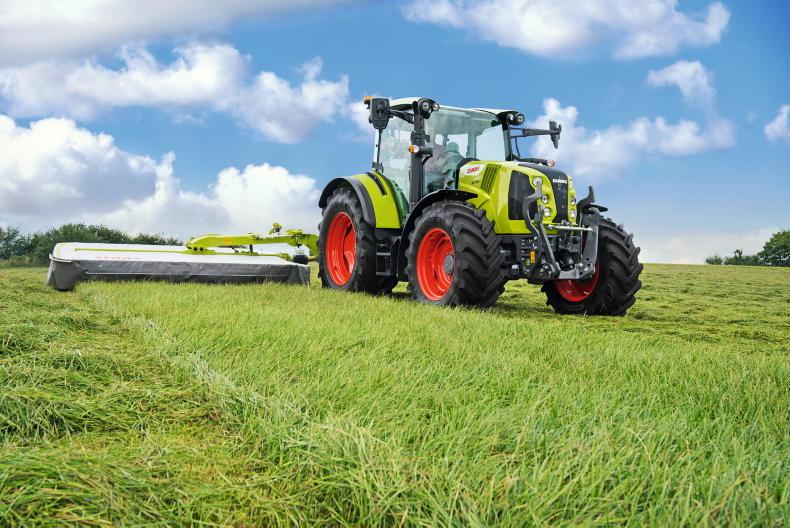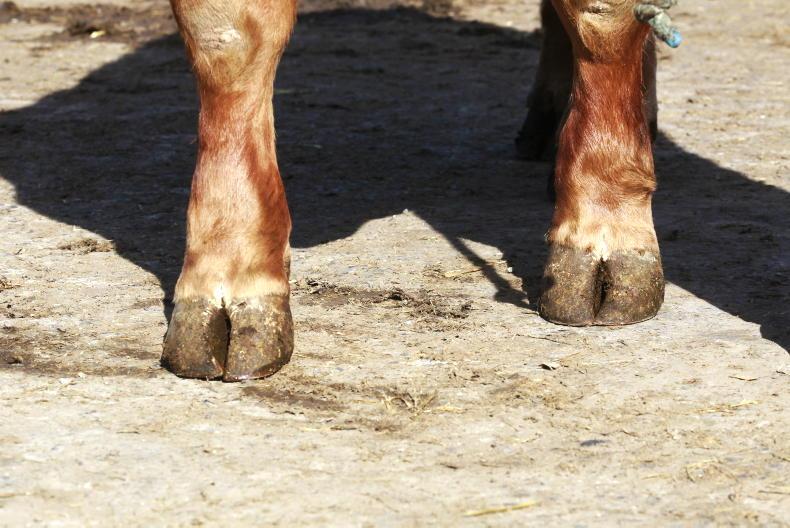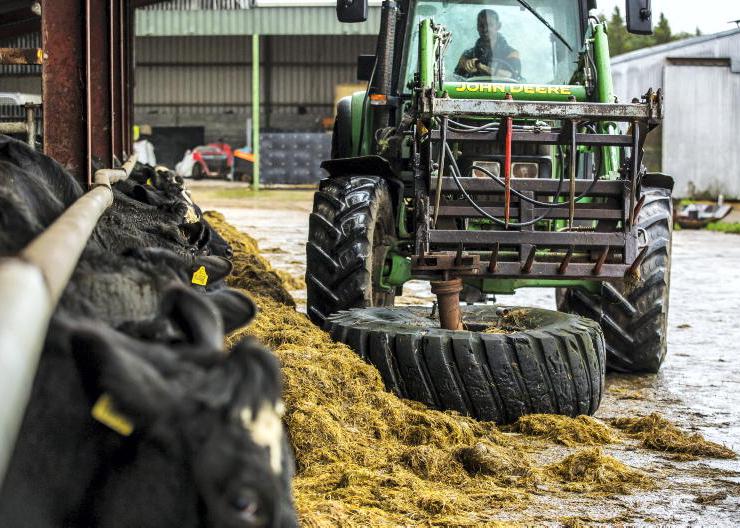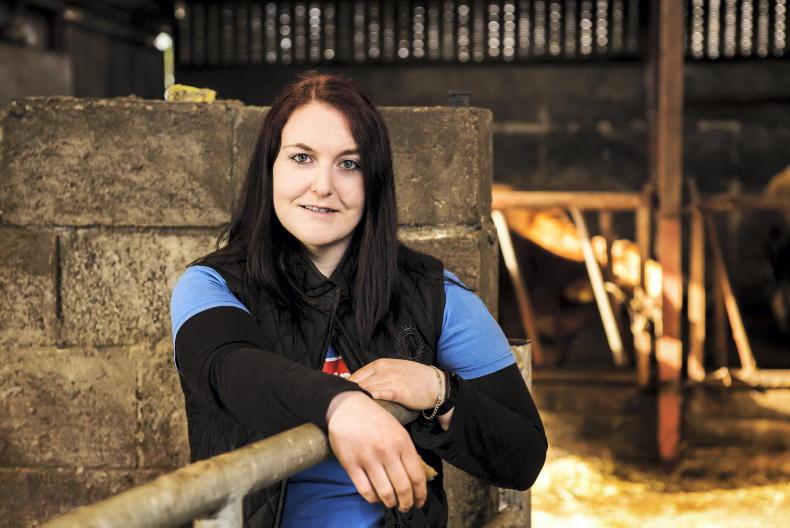Most farmers that harvested silage in June report bumper yields of grass being ensiled, leaving pits filled to capacity.
As such, many farmers may have opted not to close off any ground for second-cut.
Instead, this land is being brought into the grazing platform, reducing the need for further fertiliser applications to meet the grazing demand of livestock over the remainder of the season.
Where farmers have closed off ground for second cut, will all of this grass be required for feeding this winter, particularly if stocking rates have been reduced this year?
If not, then there may be potential to sell surplus grass as a standing crop, boosting cashflow coming in to the business over the summer.
Selling grass as a standing crop can be hit and miss. Demand is normally driven by growing conditions over the summer and the prospect of a fodder shortage in winter.
In some areas, there may be demand for silage to supply AD digesters. However, in such instances, silage must be top-quality forage, so talk to a potential buyer early if considering this option.
Valuing grass
Putting a value on a standing grass crop can be tricky, as there is no one standardised framework for agreeing a price. Some farmers will price grass to cover all inputs, along with a margin.
Others will agree a rate depending on the tonnage of grass lifted as bales or in trailers leaving the field.
Deals can often include slurry, or digestate, being returned to silage aftermath by the buyer, reducing the price for standing grass. Where farmers are thinking about selling grass as a standing crop this summer, outlined is an example of putting a monetary value on the costs of growing silage.
Putting a value on a standing grass crop
1 Include a land charge
The first thing to factor in is a cost for the land used to grow the silage. This ground could have been rented out to someone to grow the grass directly at their own expense.
For the sake of the example, assume that the land being let is worth £180/ac for the year from 1 March to 31 October. This works out at around 72p/day.
So, if grass is closed up for six weeks to grow a crop of second-cut, this comes to a land value at £30/ac.
2 Slurry
Next, put a value on any slurry applied. Keep in mind that with a summer dressing of slurry, the availability of nitrogen will be low compared with a spring application.
However, the availability of P and K will be unchanged. Assuming 2,500 gallons/ac is applied, this should supply close on 12 units/ac of P and 40 to 50 units/ac of K.
For the sake of the example, slurry is valued at £40/ac at the outlined application rate.
3 Chemical fertiliser
When factoring in the cost of chemical fertiliser, the example farmer spread two bags/ac of CAN back in June.
If nitrogen was purchased at a cost of £600/t, then the outlined fertiliser dressing comes to £60/ac. Add in another £5/ac for diesel consumed during fertiliser applications.
4 Sprays and miscellaneous
Finally, add in any miscellaneous inputs used to grow grass, such as herbicides to control weeds like docks or thistles, or diesel used to roll and repair ground that was damaged when harvesting first-cut.
For the sake of the example, the farmer spends £20/ac on miscellaneous costs for second-cut.
5 Total inputs
Combining all input costs, and including a land charge, it will have taken £155/ac to grow a crop of second-cut grass, as outlined in Table 1 for the example farm. If 20ac of silage is sold, this would bring in £3,100 in cash sales.
The example outlined should be used as a basis for working out a price agreement with a potential customer. No profit margin is included in the example.
Even if the farmer chooses to sell the crop under a different arrangement, it is time well spent working out the breakeven cost of inputs involved, safeguarding against selling grass at a loss.
Yields are always lower with second-cut silage, especially if heavy crops of first-cut were harvested from the same land base.
Realistic yields for grass closed off in mid-June and harvested in late July will be 7t to 8t/ac freshweight, assuming a high level of ryegrass is present in swards.
Where grass was closed off in late June and harvested in late August, yields are more likely to be in the region of 5t to 6t/ac.
For a farmer buying the standing crop at £155/ac, adding in £90/ac to cover contractor charges for harvesting brings the cost of grass going in the pit to £30/t.
Reducing grass yields to 7t/ac increases the cost of silage to £35/t, while at yields of 6t/ac, silage costs rise to £40/t.
The exercise highlights the rise in feed costs facing farmers this winter due to higher fertiliser and fuel costs.
At the outlined fodder costs, there is no scope for carrying passengers in the system and this should indicate what farmers can expect to pay for silage being offered for sale.
Read more
Grain market and moisture deductions
Kerry Group touches 51c/l for June milk
Most farmers that harvested silage in June report bumper yields of grass being ensiled, leaving pits filled to capacity.
As such, many farmers may have opted not to close off any ground for second-cut.
Instead, this land is being brought into the grazing platform, reducing the need for further fertiliser applications to meet the grazing demand of livestock over the remainder of the season.
Where farmers have closed off ground for second cut, will all of this grass be required for feeding this winter, particularly if stocking rates have been reduced this year?
If not, then there may be potential to sell surplus grass as a standing crop, boosting cashflow coming in to the business over the summer.
Selling grass as a standing crop can be hit and miss. Demand is normally driven by growing conditions over the summer and the prospect of a fodder shortage in winter.
In some areas, there may be demand for silage to supply AD digesters. However, in such instances, silage must be top-quality forage, so talk to a potential buyer early if considering this option.
Valuing grass
Putting a value on a standing grass crop can be tricky, as there is no one standardised framework for agreeing a price. Some farmers will price grass to cover all inputs, along with a margin.
Others will agree a rate depending on the tonnage of grass lifted as bales or in trailers leaving the field.
Deals can often include slurry, or digestate, being returned to silage aftermath by the buyer, reducing the price for standing grass. Where farmers are thinking about selling grass as a standing crop this summer, outlined is an example of putting a monetary value on the costs of growing silage.
Putting a value on a standing grass crop
1 Include a land charge
The first thing to factor in is a cost for the land used to grow the silage. This ground could have been rented out to someone to grow the grass directly at their own expense.
For the sake of the example, assume that the land being let is worth £180/ac for the year from 1 March to 31 October. This works out at around 72p/day.
So, if grass is closed up for six weeks to grow a crop of second-cut, this comes to a land value at £30/ac.
2 Slurry
Next, put a value on any slurry applied. Keep in mind that with a summer dressing of slurry, the availability of nitrogen will be low compared with a spring application.
However, the availability of P and K will be unchanged. Assuming 2,500 gallons/ac is applied, this should supply close on 12 units/ac of P and 40 to 50 units/ac of K.
For the sake of the example, slurry is valued at £40/ac at the outlined application rate.
3 Chemical fertiliser
When factoring in the cost of chemical fertiliser, the example farmer spread two bags/ac of CAN back in June.
If nitrogen was purchased at a cost of £600/t, then the outlined fertiliser dressing comes to £60/ac. Add in another £5/ac for diesel consumed during fertiliser applications.
4 Sprays and miscellaneous
Finally, add in any miscellaneous inputs used to grow grass, such as herbicides to control weeds like docks or thistles, or diesel used to roll and repair ground that was damaged when harvesting first-cut.
For the sake of the example, the farmer spends £20/ac on miscellaneous costs for second-cut.
5 Total inputs
Combining all input costs, and including a land charge, it will have taken £155/ac to grow a crop of second-cut grass, as outlined in Table 1 for the example farm. If 20ac of silage is sold, this would bring in £3,100 in cash sales.
The example outlined should be used as a basis for working out a price agreement with a potential customer. No profit margin is included in the example.
Even if the farmer chooses to sell the crop under a different arrangement, it is time well spent working out the breakeven cost of inputs involved, safeguarding against selling grass at a loss.
Yields are always lower with second-cut silage, especially if heavy crops of first-cut were harvested from the same land base.
Realistic yields for grass closed off in mid-June and harvested in late July will be 7t to 8t/ac freshweight, assuming a high level of ryegrass is present in swards.
Where grass was closed off in late June and harvested in late August, yields are more likely to be in the region of 5t to 6t/ac.
For a farmer buying the standing crop at £155/ac, adding in £90/ac to cover contractor charges for harvesting brings the cost of grass going in the pit to £30/t.
Reducing grass yields to 7t/ac increases the cost of silage to £35/t, while at yields of 6t/ac, silage costs rise to £40/t.
The exercise highlights the rise in feed costs facing farmers this winter due to higher fertiliser and fuel costs.
At the outlined fodder costs, there is no scope for carrying passengers in the system and this should indicate what farmers can expect to pay for silage being offered for sale.
Read more
Grain market and moisture deductions
Kerry Group touches 51c/l for June milk









SHARING OPTIONS